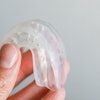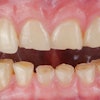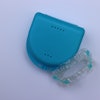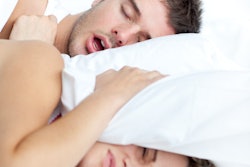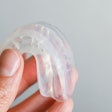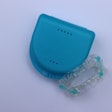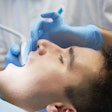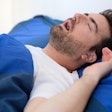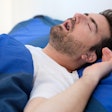
Sleep-disordered breathing, including abnormal episodes of breathing and snoring, can occur in children at any age, which is why they should be screened for the condition during routine dental exams, according to a presenter at the 2022 Yankee Dental Congress in Boston.
Dentists must understand the clinical indications of sleep-disordered breathing in children, stressed Dr. Keri Discepolo, who practices and teaches dentistry at Boston Children's Hospital, Harvard School of Dental Medicine, and Boston University Goldman School of Dental Medicine. Early diagnosis and treatment can prevent children from developing further complications, including neurocognitive conditions and possible facial deformities.
 Dr. Keri Discepolo.
Dr. Keri Discepolo."All children should be assessed," Discepolo said. "It should be part of your head and neck exam."
During exams, clinicians should evaluate craniofacial relationships, occlusion, and airway patency. Additionally, particular attention should be paid to clinical signs, including tonsillar hypertrophy, crossbites, and attrition due to bruxism, she said.
"Snoring history should be evaluated as well," Discepolo added.
To assess children, clinicians should consider using tools like the BEARS instrument, which is a sleep questionnaire that stands for bedtime problems, excessive daytime sleepiness, awakenings during the night, regularity and duration of sleep, and sleep-disordered breathing.
Although oral habits do not cause abnormal airways in patients, they do lead to malocclusions that can cause airway issues. Clinicians should be on the lookout for malocclusions that consist of an anterior open bite or crossbite in children who don't have oral habits such as nonnutritive sucking or tongue thrusting, she noted.
Those types of malocclusions without negative oral habits would "be a red flag of an airway issue," Discepolo said.
While all children should be screened, some are more likely to develop sleep-disordered breathing, she warned. Children with craniofacial abnormalities, obesity, chronic sinusitis, reactive airway inflammation, and hypertrophic adenoids and tonsils are more prone to the condition. Also, data suggest males and Black children are predisposed to sleep-disordered breathing, Discepolo said.
Without diagnosis and treatment, children can develop neurobehavioral issues with effects on the central nervous system. Sleep-disordered breathing can also affect cardiovascular function with compensatory elevated blood pressure, as well lead to facial deformities, she said.
"Overall, there may be somatic growth delays with overall decreased quality of life," Discepolo said.
Fortunately, sleep-disordered breathing can be treated, but the options vary depending on the cause. If the causative factor is obesity, then the child should lose weight, she said. A 10% to 15% reduction in overall weight has been shown to reduce sleep-disordered breathing, according to Discepolo.
On the other hand, a child with excessive hypertrophic tonsillar and adenoid tissue may need surgical removal or an adenoidectomy. Orthodontic interventions such as a myofunctional appliance or a rapid palate expander may be used to correct orofacial dimensions, but a comprehensive plan should be made, Discepolo added.
"These appliances should not be used independently of a full assessment," she warned. "More often, orthodontic issues should be addressed along with physiologic issues."
Also, treatment in children can prevent some from developing sleep-disordered breathing in adulthood. If some symptoms are treated early and successfully with orthodontic interventions or tonsillar surgery, then these patients can be set on a course for healthy airway development.
However, "other issues such as inflammatory processes in the airway, or obesity can be episodic and return during one's lifetime," Discepolo said.

